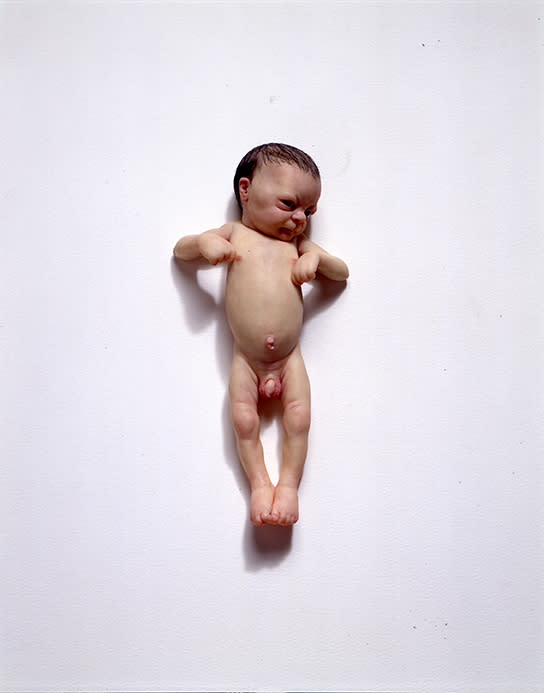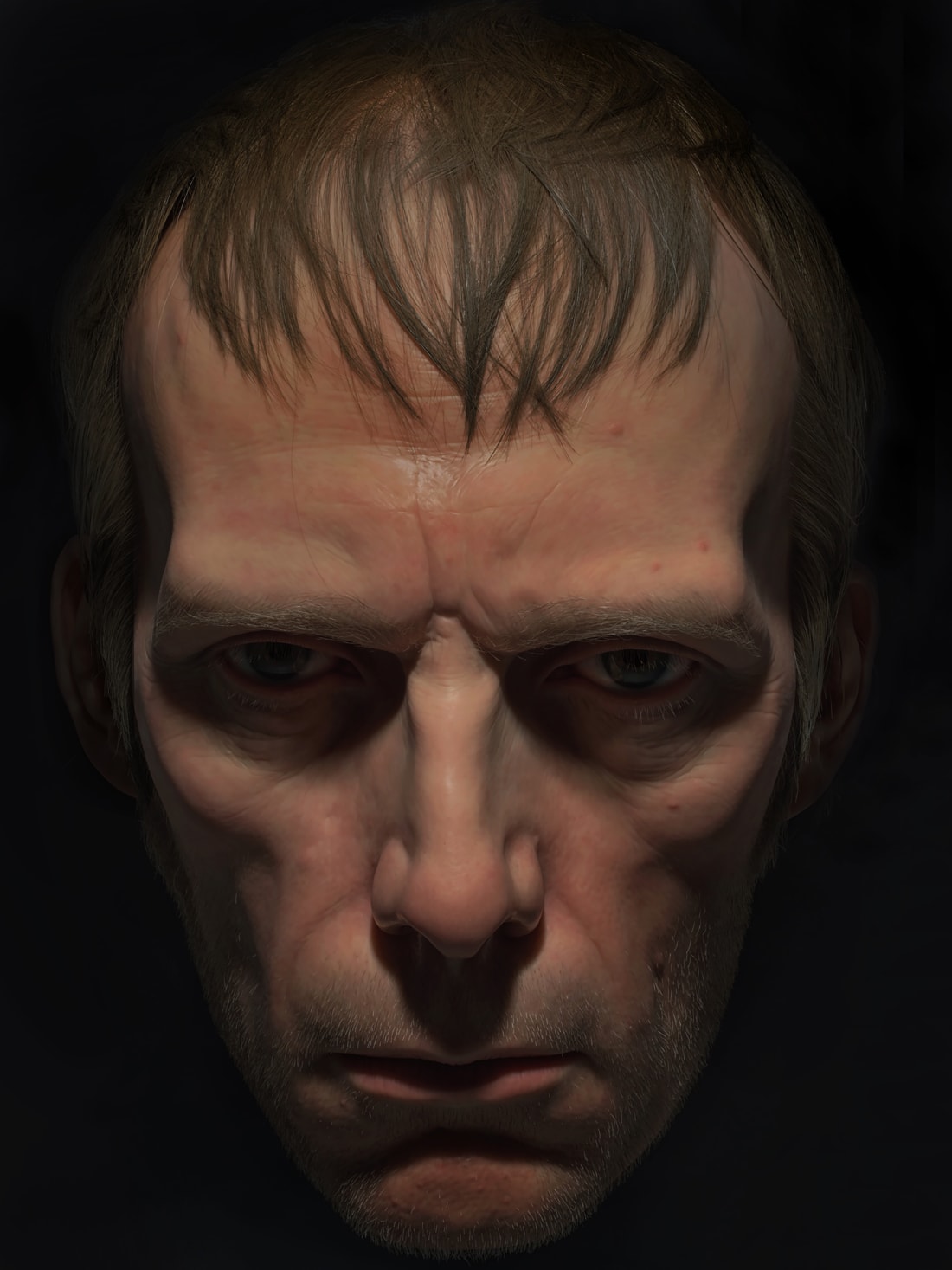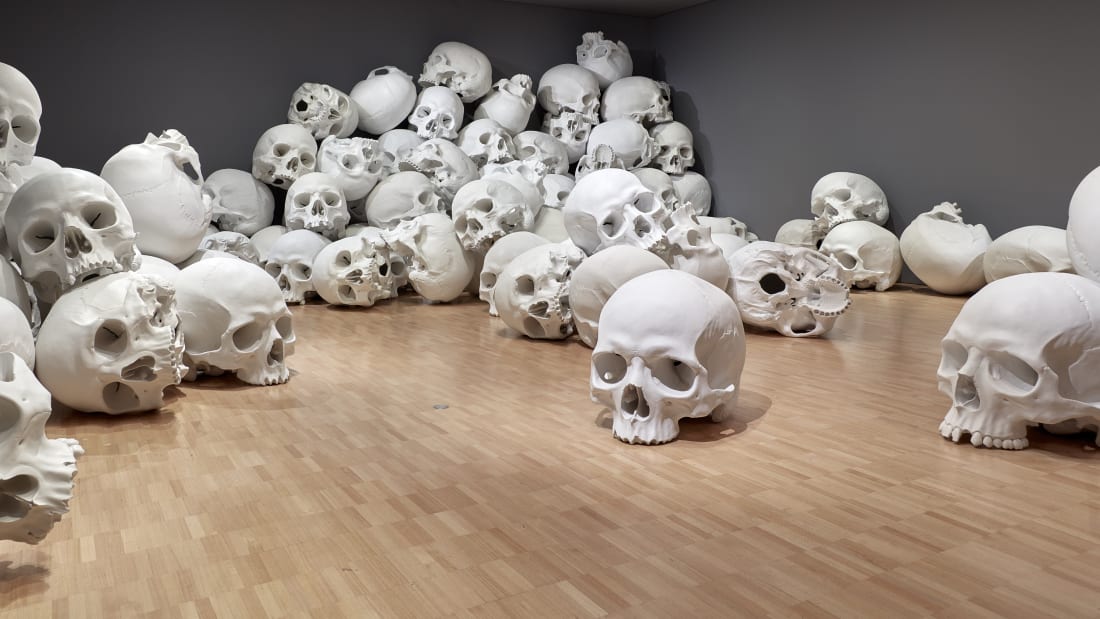
Ron Mueck Baby, 2000
The figure in Baby was taken, inverted, from an image that Mueck found in a medical textbook of a newborn held aloft by its feet moments after delivery. This image ‘set him marvelling at the alien strangeness of these raw, brand-new creatures, and sowed the idea for a work’ (Greeves, 2007, p. 75). Mueck’s first catalogued work, Big Baby (1997), addressed the same theme, to which he has frequently returned throughout his career, including in the five-metre A Girl (2006). This traditional subject in art history is inextricably linked with biblical iconography of the Virgin Mary and infant Christ, although Mueck was struck by how little these stiff, idealised babies resembled actual newborns. His Baby is depicted with astonishing realism in all its physical strangeness, with scrawny limbs, distended belly, umbilical nub and genitalia laid bare for scrutiny.
Mounted upright on the wall, the baby boy is ‘pinned out, cruciform, beneath our gaze’ with his arms splayed and feet together (Greeves, 2011, p. 109). This position visually echoes depictions of the crucifixion, with the figure of Christ nailed to the cross in a similar position. In historical depictions of the Madonna and Child, the figure of the infant Christ foreshadowed his eventual sacrifice, investing these tender maternal images with a particular poignancy. Mueck’s Baby embodies the first moments of existence, the starting point of human life’s trajectory, but these resonances with religious iconography also foreshadow the eventual end that we are all destined to meet.
The baby peers out through swollen eyelids, as if glimpsing the world for the first time and unsure what to make of it. ‘Creating the illusion of self-awareness is an essential aspect of many of Mueck’s figures,’ writes Keith Hartley. ‘It is even, and perhaps most poignantly, true of his babies. Watching a baby become aware of the separateness of its body from the world and the people about it is a joy mixed with melancholy – joy that a new individual has entered the world, but melancholy that the process of individuation destines it to be alone, in the sense of being a separate consciousness, for the rest of its life’ (Hartley, 2006, pp. 8–9).



























































































































































































